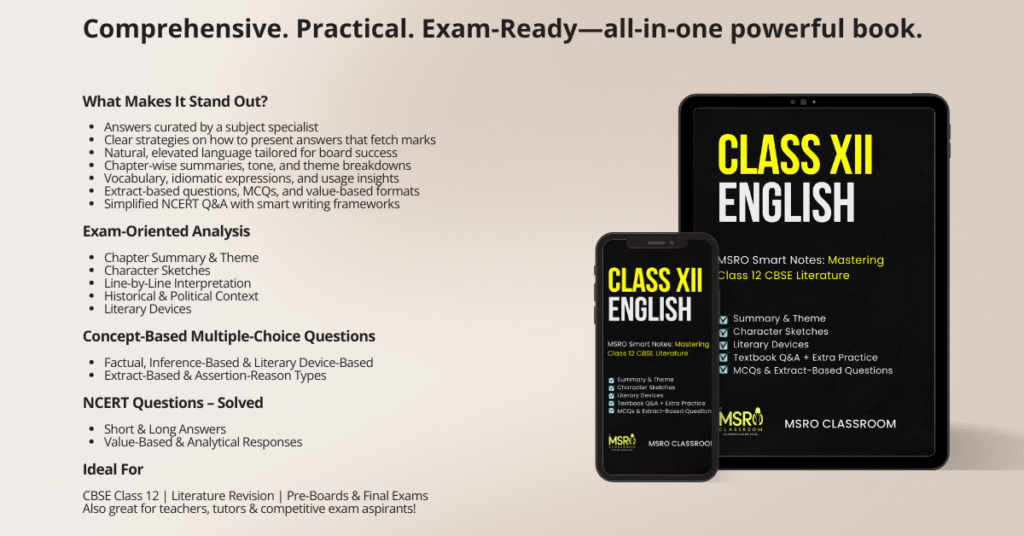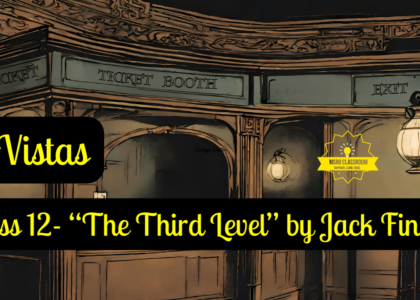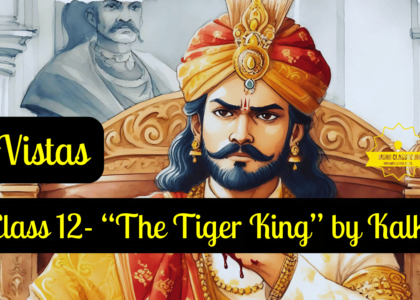Part 2, ‘We Too Are Human Beings’ of “Memories of Childhood,” from Bama’s “Karukku” Summary, Character Sketch, Explanation, Theme, Important Questions and Textbook Question and Answers.
Memories of Childhood
Part II- “We Too Are Human Beings” by Bama:
Table of Contents
Next on Vistas: Part 1 “Memories of Childhood” by Zitkala -Sa
“First published in Tamil in 1992, Karukku broke barriers of tradition in ways more than one. The first autobiography of a Dalit woman writer, the book is a classic of subaltern writing and a bold and poignant tale of life outside mainstream Indian thought and function. Revolving around the main theme of caste oppression within the Catholic Church, Karukku portrays the tension between the self and the community and presents Bama’s life as a process of self-reflection and recovery from social and institutional betrayal…”
Karukku,
Bama and Lakshmi Holmström
Oxford University Press, India, 2012
Summary “We Too Are Human Beings”:
Part II, “We Too Are Human Beings”, taken from Bama Faustina‘s “Karukku,” the narrator recounts childhood encounters with caste-based discrimination. Despite the lively streets of her Tamil Dalit community, she witnesses instances of untouchability, such as an elder’s deferential offering of snacks to a landlord. Her brother’s counsel on education’s power to overcome societal injustices profoundly resonates with her.
Inspired, she dedicates herself to her studies, emerging as the top student in her class. Bama exposes the entrenched caste hierarchy’s impact on everyday life and highlights education’s role in challenging systemic inequities.
Through her narrative, she advocates for empowering marginalised communities and highlights the transformative potential of knowledge and academic achievement.

Theme “We Too Are Human Beings”:
Part II, “We Too Are Human Beings”, revolves around caste-based discrimination, social injustice, education as a means of empowerment, and the struggle for dignity and equality.
- Caste-based Discrimination: The narrator vividly describes instances of untouchability and caste-based discrimination that she witnesses in her community. These incidents highlight the rigid social hierarchy and the dehumanising treatment of marginalised groups.
- Social Injustice: The excerpt portrays the systemic injustices faced by the Dalit community, including being relegated to menial tasks and denied basic dignity and respect due to their caste status.
- Education and Empowerment: The narrator’s brother emphasises the importance of education as a tool for empowerment and social mobility. Education is presented as challenging societal norms and gaining respect and recognition.
- Struggle for Dignity and Equality: The narrator’s reflections on the indignities faced by her community underscore their ongoing struggle for dignity and equality in a society marked by caste-based prejudices and discrimination.
The excerpt delves into the complexities of caste dynamics and the quest for social justice and equality in a deeply stratified society. It highlights the transformative potential of education and the resilience of individuals striving to overcome systemic oppression and discrimination.
Explanation of “We Too Are Human Beings” for Auditory Learners:
Duration: 12 Minutes
English Subtitles with Time stamps are available.
Character Sketch:
Bama/ Bama Faustina:
Bama, the author and narrator of “Karukku,” is a resilient and introspective individual who navigates the complexities of caste-based discrimination and social injustice in her community. Here’s a character sketch based on her portrayal in the excerpt and her autobiographical works:
- Courageous and Resilient: Bama confronts her community’s injustices and indignities. Despite the challenges and discrimination, she maintains resilience and refuses to accept the status quo.
- Reflective and Observant: Bama is thoughtful and observant of her community’s social dynamics and power structures. She keenly observes the nuances of caste-based discrimination and reflects on its impact on her identity and sense of self-worth.
- Driven by Education: Education is a central theme in Bama’s life. Motivated by her elder brother’s advice, she recognises education as a pathway to empowerment and social change. Her dedication to academic achievement reflects her determination to challenge societal norms and break free from the constraints of her caste.
- Empathetic and Compassionate: Bama demonstrates empathy and compassion towards her community members who endure similar experiences of discrimination and marginalisation. She shares their struggles and aspirations, advocating for their rights and dignity.
- Identity and Self-discovery: Bama’s journey towards self-discovery and identity formation is a recurring theme in her works. As she grapples with the complexities of caste and gender, she explores her sense of belonging in a society that often seeks to marginalise and silence her voice.
Bama emerges as a multifaceted and dynamic character whose resilience, empathy, and commitment to social justice profoundly impact readers. Her character embodies the struggle for dignity, equality, and empowerment in the face of entrenched social hierarchies and systemic oppression.
Question and Answers “Memories of Childhood”:
Reading with Insight:
Q1. The two accounts that you read above are based on two distant cultures. What is the commonality of the theme found in both of them?
A1: The common theme found in both accounts is the experience of marginalisation, discrimination, and the struggle for dignity and identity within their respective cultures. Zitkala-Sa’s narrative reflects the oppression faced by Native American children in assimilationist boarding schools, where cultural practices were suppressed and identities were forcibly altered.
Similarly, Bama’s account illustrates the pervasive caste-based discrimination and social exclusion experienced by the oppressed in India, highlighting the dehumanising treatment and denial of fundamental rights based on caste identity.
Both narratives depict the profound impact of systemic oppression on individuals and communities and the resilience and determination to resist and assert their humanity and cultural pride despite adversity.
Q2. It may take a long time for oppression to be resisted, but the seeds of rebellion are sowed early in life. Do you agree that injustice in any form cannot escape being noticed, even by children?
A2: Yes, I agree that injustice in any form often does not escape the notice of children. Children are naturally perceptive and sensitive to fairness and equality from a young age. They have an innate sense of right and wrong and can quickly discern when something is unjust or discriminatory, even if they might not fully understand the situation’s complexities.
Children absorb information from their surroundings, which shapes their understanding of justice. Injustice affects them deeply, making them feel empathy for marginalised people and may motivate them to speak out or take action.
Therefore, while children may not always have the vocabulary or understanding to articulate complex social issues, they are often aware of and affected by injustice in various forms. This awareness can plant the seeds of rebellion and resistance against oppression later in life.
Q3. Bama’s experience is that of a victim of the caste system. What kind of discrimination does Zitkala-Sa’s experience depict? What are their responses to their respective situations?
A3: Zitkala-Sa’s experience depicts the discrimination faced by Native American children in assimilationist boarding schools, where their cultural identity was systematically eroded. Forced to conform to Euro-American norms, Zitkala-Sa’s traumatic experience of having her long hair forcibly cut symbolises the loss of Indigenous identity and autonomy. In response, she became a vocal critic of such institutions, advocating for the preservation of Native American culture and rights.
Bama’s experience as a victim of the caste system reflects the pervasive discrimination and social hierarchy present in Indian society of the 90s. Subject to caste-based oppression, Bama highlights the indignities of untouchability and social marginalisation faced by her kind. Her writing challenges caste norms and advocates for social justice and equality.
Zitkala-Sa and Bama respond to their situations with resilience and activism, seeking to dismantle oppression systems and affirm their communities’ dignity and rights.
Extra Questions “We Too Are Human Beings”:
Short Answer Type Questions:
Q1: What is the significance of the term “Karukku” in Bama’s autobiography?
A1: “Karukku”, meaning “Palmyra” leaves, symbolises the double-edged nature of the challenges faced by Tamil Dalit women. It reflects the serrated edges of discrimination and the potential for newness and freshness in their struggle for equality.
Q2: How does Bama describe her childhood experiences with untouchability?
A2: Bama vividly recalls experiencing untouchability in her childhood walks home from school. Despite the short distance, her journey was prolonged by various street attractions yet tainted by caste discrimination and humiliation.
Q3: Describe the scene involving the elder carrying a packet to the landlord.
A3: An elder from Bama’s community carries a packet of snacks for the landlord, holding it by its string to avoid touching it directly. This act reflects the pervasive belief in untouchability, where contact with lower castes is deemed polluting.
Q4: What realisation does Bama come to regarding the elder’s actions?
A4: Bama initially finds humour in the elder’s manner of carrying the packet, but her brother explains that it stems from the belief in upper caste purity. This realisation saddens Bama and ignites her anger against the caste system’s dehumanising effects.
Q5: How does Bama’s elder brother encourage her to combat discrimination?
A5: Bama’s elder brother emphasises the importance of education in overcoming discrimination. He urges her to excel academically, believing that knowledge and success will elevate their status and challenge societal prejudices against their community.
Q6: What impact does her brother’s advice have on Bama?
A6: Bama is deeply influenced by her brother’s advice, fueling her determination to excel academically. She channels her frustration into diligent study, ultimately achieving academic success and gaining respect, strengthening her resolve against discrimination.
Q7: What role does education play in Bama’s journey of empowerment?
A7: Education serves as a transformative force in Bama’s journey of empowerment, empowering her to challenge societal norms and assert her dignity as a Dalit woman. Through academic excellence, she gains self-confidence and inspires others within her community to strive for social change.
Q8: What does Bama’s brother teach her about dignity and respect?
A8: Bama’s brother emphasises that dignity and respect are not inherently granted to them as Dalits but must be earned through education and personal advancement. He encourages her to strive for excellence to defy societal expectations and reclaim their dignity.
Q9: How does Bama’s narrative highlight the intersectionality of caste, gender, and religion?
A9: Bama’s narrative highlights the complex intersectionality of caste, gender, and religion in shaping the experiences of Dalit women within Tamil society. As a Tamil Dalit woman from a Roman Catholic family, she navigates multiple layers of marginalisation and discrimination, offering insight into the interconnected nature of oppression.
Q10: What does Bama’s dedication to education signify in the context of Dalit resistance?
A10: Bama’s dedication to education symbolises Dalit resistance against entrenched caste discrimination and oppression. By prioritising learning and intellectual growth, she challenges the systemic barriers imposed by the caste hierarchy and asserts her right to equality and dignity.
Long Answer Type Questions:
Q1: What is the significance of the title “Karukku” in Bama’s work?
A1: The title “Karukku” is poignant in Bama’s work. Translating to “Palmyra leaves,” it symbolises the dual-edged nature of the experiences of Dalit individuals, akin to the serrated edges of the leaves resembling double-edged swords.
Moreover, the Tamil word “Karukku,” containing “karu”, meaning embryo or seed, conveys notions of freshness and newness, suggesting the emergence of a new voice. This new narrative exposes the harsh realities of Dalit life.
Through this title, Bama captures the essence of her work, delving deep into Dalit communities’ struggles, humiliations, and aspirations while heralding a fresh perspective and reclaiming of identity.
Q2: How does the excerpt depict the experience of untouchability in Bama’s childhood?
A2: The excerpt vividly portrays the pervasive presence of untouchability in Bama’s childhood experiences. Despite her young age, she keenly observes and experiences the segregation enforced by caste prejudices.
Bama recounts instances where individuals from the dominant castes refuse to touch items handed by Dalits, considering themselves polluted if they do so. This discrimination is ingrained in everyday interactions, as seen when an elder of Bama’s street handles a parcel with extreme caution, fearing pollution if he touches it directly.
Through such encounters, Bama highlights the dehumanising effects of caste hierarchy, where even mundane actions are steeped in notions of purity and pollution, perpetuating the marginalisation of Dalit communities.
Q3: How does Bama’s elder brother’s advice influence her perspective on education and social mobility?
A3: Bama’s elder brother’s advice catalyses her understanding of the transformative power of education and its role in social mobility. He emphasises the importance of education to challenge the indignities imposed by caste discrimination.
By urging Bama to excel academically, he instils in her the belief that education can empower individuals to overcome societal barriers and reclaim their dignity and respect. His words inspire Bama to channel her efforts into her studies, driven by the desire to break free from caste oppression.
Through education, Bama seeks personal advancement and envisions a future where her community can transcend the confines of caste-based discrimination and claim their rightful place in society.
Q4: How does Bama show the balance between societal rules and personal choice in confronting caste discrimination in “Karukku”?
A4: The excerpt from Bama’s book “Karukku” explores how societal norms and caste-based discrimination affect people’s lives. Through her experiences and stories, Bama shows how social hierarchies shape daily interactions and affect marginalised communities.
Despite these challenges, Bama emphasises the resilience and agency of individuals who challenge these norms. Her brother Annan’s advice shows that education and personal initiative can help people overcome these injustices.
Bama’s story is about standing up for dignity and humanity in the face of caste oppression and advocating for a more fair and inclusive society.
Q5: How do the stories of Zitkala-Sa and Bama reveal the challenges of cultural oppression and how they resist it within their communities?
A5: The stories of Zitkala-Sa and Bama unveil the multifaceted challenges of cultural oppression and the resilient forms of resistance within their communities.
Zitkala-Sa, a Native American activist, confronted the erasure of Indigenous culture through forced assimilation in boarding schools, where she experienced the suppression of language and traditions. Despite this, she used her writing to amplify Indigenous voices and advocate for cultural preservation.
Similarly, Bama, from a Dalit background, depicted the insidious impact of caste discrimination, revealing the dehumanising treatment and systemic barriers faced by her community.
Through education and self-assertion, both Zitkala-Sa and Bama challenged oppressive norms, fostering resilience and cultural pride amidst adversity while paving the way for societal transformation.
Q6: How did education shape the experiences and activism of Zitkala-Sa and Bama, and what role did it play in their efforts to challenge cultural oppression within their communities?
A6: Education played a pivotal role in the lives and activism of both Zitkala-Sa and Bama, empowering them to challenge cultural oppression within their communities.
Zitkala-Sa, an Indigenous woman, was sent to boarding schools where she was forced to abandon her cultural identity and assimilate into the dominant culture. However, through her education, she learned to express the challenges faced by Native Americans and to defend their cultural heritage.
On the other side of the globe, Bama’s pursuit of education enabled her to confront the systemic barriers of caste discrimination, instilling the determination to resist oppression and pursue social change.
Education gave both women the knowledge, voice, and agency to challenge oppressive norms, fostering resilience and empowerment within their communities.






